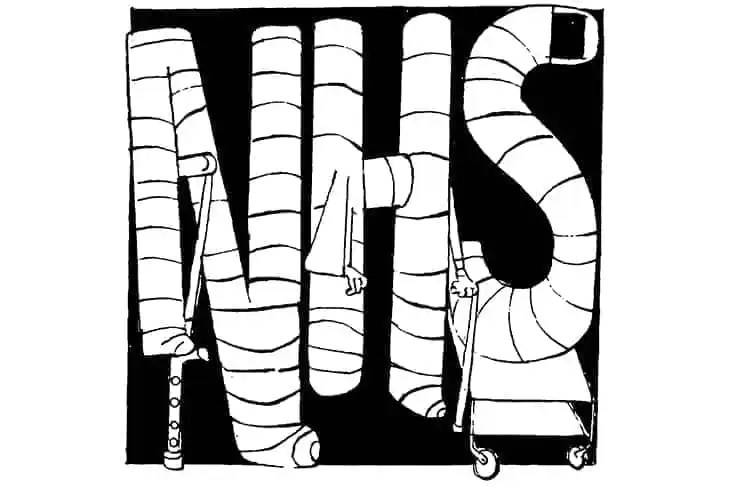Rishi Sunak’s problems aren’t confined to his party. The NHS is in trouble and one of the Prime Minister’s five new year pledges was to get its record waiting list – 7.2 million in NHS England alone – down, ensuring patients get faster access to care.
The problem with this promise is that the waiting list is expected to grow even bigger this year. What number it ultimately reaches depends on how many people turn up at an NHS hospital, having held back doing so during the pandemic years. With this variable out of the government’s control (and indeed, we want these people to come forward and seek treatment), it has to focus on capacity within the health service – to make sure patients can be processed and treated at a faster pace.
NHS waiting times are likely to be far more precarious than economic figures
This is the idea behind today’s new blueprint: a joint-plan from the government and NHS England to ‘recover’ urgent and emergency care services. A £1 billion fund will add ‘800 new ambulances, including 100 specialist mental health vehicles, and 5,000 more sustainable hospital beds’ to deal specifically with skyrocketing ambulance wait times and record-high delays for A&E admittance.
This is not a new pot of money for the NHS, but rather a newly-allocated one. The £1 billion comes from last year’s Autumn Statement, when the Chancellor committed an additional £3 billion to support the NHS in its Covid recovery, on top of the £12 billion that was originally going to be raised through a new health and social care levy, and is now being funded by general taxation.
Will the plan work? It’s telling that the government’s set date for meeting its new targets is March 2024: a perfect alignment with when we know last year’s internal modelling from the Department of Health and the NHS expected the waiting list to peak.
In line with the government’s pledge for ‘halving inflation’ or stirring up some economic growth, it may well be that ministers are once again taking their cues from modelling that shows numbers moving in the right direction. Is Sunak tacking on pledges to a timeline that is already expected?
If so, the PM should be careful: NHS waiting times are likely to be far more precarious than economic figures. The impact of the increased capacity announced today will be dependent on finding the trained staff to transport patients and to look after them in these new beds.
Meanwhile, the addition of 5,000 extra beds does not offset the estimated 13,000 beds that are thought to be filled by ‘medically fit’ patients, who either don’t feel ready to leave hospital or whose staff are struggling to find the time to discharge them.
You can tell the government isn’t as confident about its NHS pledges by the way it is tinkering with metrics. While the official target is for 95 per cent of patients to wait no more than four hours in A&E, its target under this new blueprint is 75 per cent of patients by March next year.
The doubling of its target for ‘emergency’ classified patients waiting for an ambulance – from 18 minutes up to 30 minutes – is also telling. In the short-term, even these watered-down targets will look harder to achieve: as part of today’s announcements, health secretary Steve Barclay has insisted that the NHS start publishing A&E waiting time figures from when patients arrive in hospital (rather than when they are admitted), which is likely to increase the average wait time significantly.
Honesty around these figures is crucial. This will ensure that both the government and the public understand the realities around healthcare access right now. The numbers also provide a stark reminder of how services for patients have crumbled, with no ‘recovery’ date in sight. Of course, outcomes for NHS patients pre-pandemic were nothing to celebrate either. This blueprint is another sticking plaster. The future of the health service, and more broadly the delivery of decent healthcare across the UK, remains a completely unresolved problem.







Comments